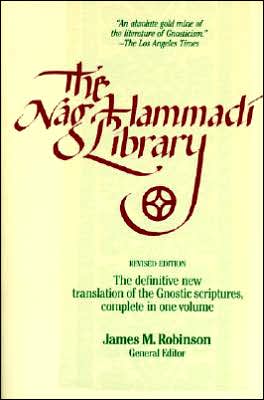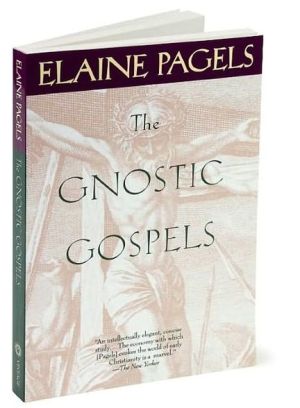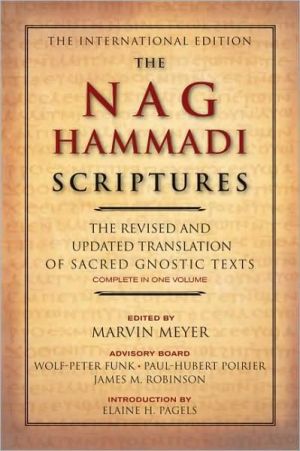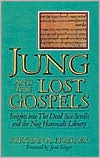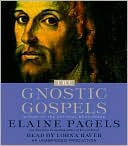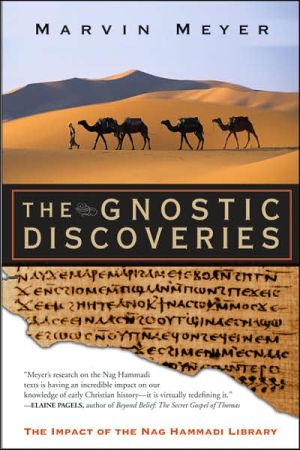Nag Hammadi Library in English: Revised Edition
This revised, expanded, and updated edition of The Nag Hammadi Library is the only complete, one-volume, modern language version of the renowned library of fourth-century manuscripts discovered in Egypt in 1945.\ First published in 1978, The Nag Hammadi Library launched modern Gnostic studies and exposed a movement whose teachings are in many ways as relevant today as they were sixteen centuries ago.\ James M. Robinson's updated introduction reflects ten years of additional research and...
Search in google:
This revised, expanded, and updated edition of The Nag Hammadi Library is the only complete, one-volume, modern language version of the renowned library of fourth-century manuscripts discovered in Egypt in 1945.First published in 1978, The Nag Hammadi Library launched modern Gnostic studies and exposed a movement whose teachings are in many ways as relevant today as they were sixteen centuries ago.James M. Robinson's updated introduction reflects ten years of additional research and editorial and critical work. An afterword by Richard Smith discusses the modern relevance of Gnosticism and its influence on such writers as Voltaire, Blake, Melville, Yeats, Kerouac, and Philip K. Dick.Acclaimed by scholars and general readers alike, The Nag Hammadi Library is a work of major importance to everyone interested in the evolution of Christianity, the Bible, archaeology, and the story of Western civilization.
Introduction\ by\ James M. Robinson\ 1. The Stance of the Texts\ The Nag Hammadi library is a collection of religious texts that vary widely from each other as to when, where, and by whom they were written. Even the points of view diverge to such an extent that the texts are not to be thought of as coming from one group or movement. Yet these diversified materials must have had something in common that caused them to be chosen by those who collected them. The collectors no doubt contributed to this unity by finding in the texts hidden meanings not fully intended by the original authors. After all, one of them, The Gospel of Thomas, begins with a word to the wise: "Whoever finds the interpretation of these sayings will not experience death." Thus the texts can be read at two levels: what the original author may have intended to communicate and what the texts may subsequently have been taken to communicate.\ The focus that brought the collection together is an estrangement from the mass of humanity, an affinity to an ideal order that completely transcends life as we know it, and a life-style radically other than common practice. This life-style involved giving up all the goods that people usually desire and longing for an ultimate liberation. It is not an aggressive revolution that is intended, but rather a withdrawal from involvement in the contamination that destroys clarity of vision.\ As such, the focus of this library has much in common with primitive Christianity, with eastern religion, and with"holy men" (and women) of all times, as well as with the more secular equivalents of today, such as the counter-culture movements coming from the 1960s. Disinterest in the goods of a consumer society, withdrawal into communes of the likeminded away from the bustle and clutter of big-city distraction, noninvolvement in the compromises of political process, sharing an ingroup's knowledge both of the disaster-course of the culture and of an ideal, radical alternative not commonly known -- all this in modern garb is the real challenge rooted in such materials as the Nag Hammadi library.\ To be sure, these roots, fascinating and provocative as they are, can also be confusing and even frustrating, not only for the person scarcely open to what they have to say, but also to the more attentive who seek to follow the light glimmering through the flow of language. For the point of the Nag Hammadi library has been battered and fragmented by the historical process through which it has finally come to light. A salvage operation is needed at many levels if that point is to be grasped clearly today. The ancient world's religious and philosophical traditions and mythology were all that was available to express what was in fact a quite untraditional stance. Indeed the stance was too radical to establish itself within the organized religions or philosophical schools of the day, and hence was hardly able to take advantage of the culture's educational institutions to develop and clarify its implications. Gnostic schools began to emerge within Christianity and Neoplatonism, until both agreed in excluding them as the "heresy" of Gnosticism. Thus meaningful and eloquent myths and philosophic formulations of that radical stance became in their turn garbled traditions, re-used by later and lesser authors whose watered-down, not to say muddied, version may be most of what has survived...though there are several "classics" in the Nag Hammadi library.\ The texts were translated one by one from Greek into Coptic, and not always by translators capable of grasping the profundity or sublimity of what they sought to translate. The translator of a brief section of Plato's Republic clearly did not understand the text, though it obviously seemed edifying and worth translating. Fortunately, most texts are better translated, but when there are duplications one can sense what a difference the better translation makes in comparison to the poor translation -- which leads one to wonder about the bulk of the texts that exist only in a single version.\ There is the same kind of hazard in the transmission of the texts by a series of scribes who copied them, generation after generation, from increasingly corrupt copies, first in Greek and then in Coptic. The number of unintentional errors is hard to estimate, since such a thing as a clean control copy does not exist; nor does one have, as in the case of the Bible, a quantity of manuscripts of the same text that tend to correct each other when compared. Only when the error can be detected as such in the sole copy we have can it be corrected. In addition there is the physical deterioration of the books themselves, which began no doubt before they were buried around 400 C.E., advanced steadily while they remained buried, and unfortunately was not completely halted in the period between their discovery in 1945 and their final conservation some thirty years later. When only a few letters are missing, they can often be filled in adequately, but larger holes must simply remain a blank.\ The reader should not be misled by such impediments to understanding into thinking that the stance inherent in these essays is unworthy of serious consideration. Rather, we have to do here with an understanding of existence, an answer to the human dilemma, an attitude toward society, that is worthy of being taken quite seriously by anyone able and willing to grapple with such ultimate issues. This basic stance has until now been known almost exclusively through the myopic view of heresyhunters, who often quote only to refute or ridicule. Thus the coming to light of the Nag Hammadi library gives unexpected access to the gnostic stance as Gnostics themselves presented it. It may provide new roots for the uprooted.\ Those who collected this library were Christians, and many of the essays were originally composed by Christian authors....\ Nag Hammadi Library in English. Copyright © by James M. Robinson. Reprinted by permission of HarperCollins Publishers, Inc. All rights reserved. Available now wherever books are sold.
